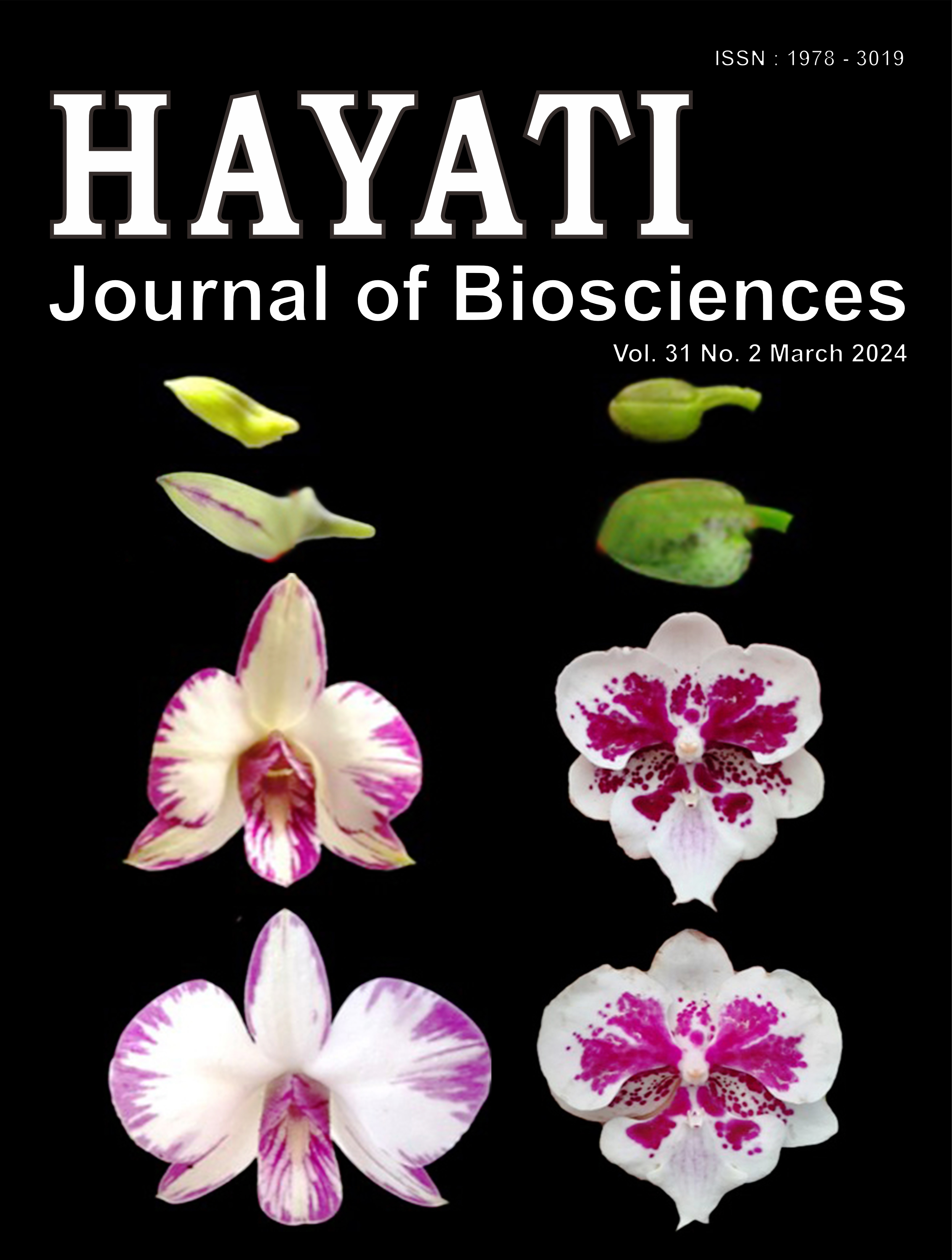Annonacin and Squamocin Conjugation with Nanodiamond Alters Metastatic Marker Expression in Breast Cancer Cell Line
Abstract
Breast cancer can perform metastasis to distant organs and cause more than 90% of malignancy-related deaths. The anti-metastasis potency of nanodiamond-conjugated annonacin and squamocin against MCF-7 cells is currently studied. First, IC50 determination of both free annonacin and squamocin to evaluate their potency as cytotoxic agents. Upon getting the IC50 value, both compounds are conjugated into nanodiamonds. Drug loading efficiencies of nanodiamond-conjugated annonacin and squamocin are 88.9% and 89.1%, respectively. Meanwhile, the ND-annonacin and ND-squamocin complex size is 150-300 nm based on SEM imaging. Subsequently, cell viability assessment of MCF-7 was performed with six cohort designs, namely, K (control cell), AN (annonacin), SQ (squamocin), NDAN (nanodiamond-conjugated annonacin), and NDSQ (nanodiamond-conjugated squamocin). Both IC50 and cell viability are assessed by MTT assay after 24 h incubation. All cohorts also underwent gene expression analysis subject to the metastasis markers CTNND1 (catenin delta 1), NOTCH4, and C-JUN. Here, the IC50 of both free annonacin (4.52 µg/ml) and squamocin (10.03 µg/ml) are more than IC50 of potent anticancer (< 4 µg/ml) for pure compounds. However, nanodiamond conjugation to both compounds can decrease cell viability better than free compounds. Compared to K, nanodiamond-conjugated annonacin and squamocin significantly decreases cell viability after 24 h incubation. Bioinformatics analysis confirmed significant pro-metastasis (C-JUN and NOTCH4) upregulation and anti-metastasis (CTNND1) downregulation in tumors compared to normal. Recent findings demonstrated that nanodiamond-conjugated annonacin can significantly upregulate CTNND1 and significantly downregulate C-JUN and NOTCH4. Even so, nanodiamond-conjugated squamocin upregulate CTNND1 but not significantly and significantly downregulate C-JUN and NOTCH4.
Downloads
Copyright (c) 2023 Firli Rahmah Primula Dewi, Sri Puji Astuti Wahyuningsih, Adelah Putri Milenia Sari, Umi Nur Alfiah, Vuanghao Lim, Ummi Zubaidah, Alfiah Hayati

This work is licensed under a Creative Commons Attribution-NonCommercial 4.0 International License.
HAYATI J Biosci is an open access journal and the article's license is CC-BY-NC. This license lets others distribute, remix, tweak, and build upon author's work, as long as they credit the original creation. Authors retain copyright and grant the journal/publisher non exclusive publishing rights with the work simultaneously licensed under a https://creativecommons.org/


















.png) IPB University
IPB University Department of Biology
Department of Biology The Indonesian Biological Society
The Indonesian Biological Society 

